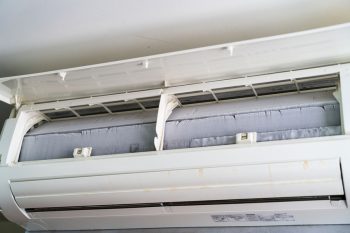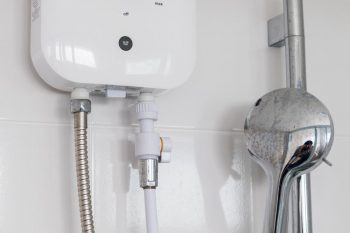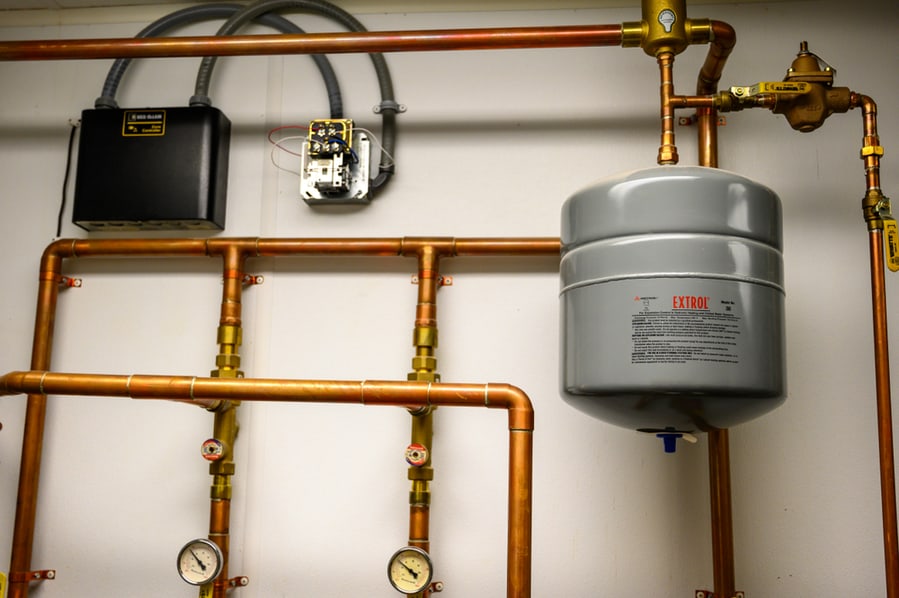
A thermal expansion tank, also known as a water heater expansion tank, is a safety device in water heating units. The purpose is to prevent accidents due to thermal expansion in pipelines.
Since the thermal expansion is a natural phenomenon, it can often lead to dangerous incidents if not considered when working on your house’s plumbing tasks. Especially if you own a tankless water heater, the risk of such accidents can increase over multiple folds.
When 25 gallons of cold water is heated, it can expand and cover an additional gallon of space. That means for every 100 gallons, you need 104 gallons of space in the tank to allow its thermal expansion.
In case the additional space is not provided, it can build up a high pressure inside the water tank. It can either cause bents in the pipes or eventually cause them to burst, resulting in a massive leakage.
A thermal expansion tank is attached to the water heating system of your home. As the water expands on heating, it creates pressure inside the heating system and pipeline. The additional pressure is released into the thermal expansion tank.
To check the thermal expansion tank, you will need to attach a pressure gauge at the valve stem of the unit. If the pressure is 75 PSI, it indicates good health for your expansion tank. However, if the pressure is lower than that, you can adjust it by using a hand pump.
If the pressure is around zero PSI, the rubber bladder is ruptured and not working. You will need to replace your thermal expansion unit in this case.
This article will help you learn about a thermal expansion tank. You will learn about its proper use and maintain it to avoid the risk of any incidents. Moreover, you can learn the step-by-step procedure to check your thermal expansion tank.
What Is a Thermal Expansion Tank?
A thermal expansion tank is attached to the water heating unit at your house. It is small and often attached at the top of the water heating unit fixed to the hot water pipeline.
The purpose of this tank is to absorb the excess heated water into its rubber bladder. This helps manage the excess pressure that builds up in the water heater and the pipes due to the thermal expansion of water.
Innovation Over Time
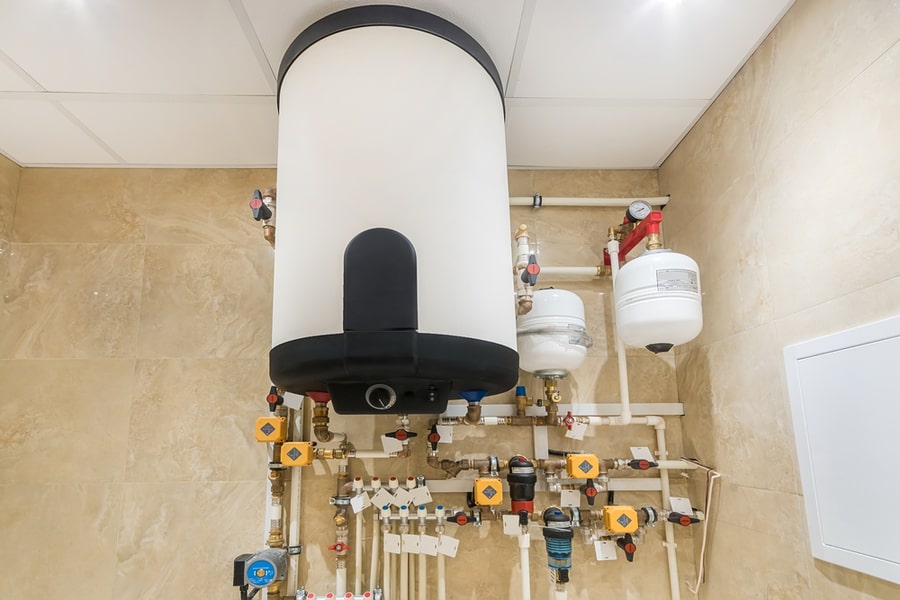
Previously, there were no thermal expansion tanks needed. The water was being supplied to the households through a single city’s water supply. After heating the water, the expanded water would flow back into the supply pipeline without creating any risk of an accident.
Later on, restrictions were imposed on open-valved water heating tanks. Since the water would flow back into the city pipelines, it created a risk of contaminating the pipeline water.
However, the problem with new water heaters with valve controls was also serious, i.e., pipes bursting. That is where thermal expansion tanks rose and became necessary for every water heating unit.
How Does a Thermal Expansion Tank Work?
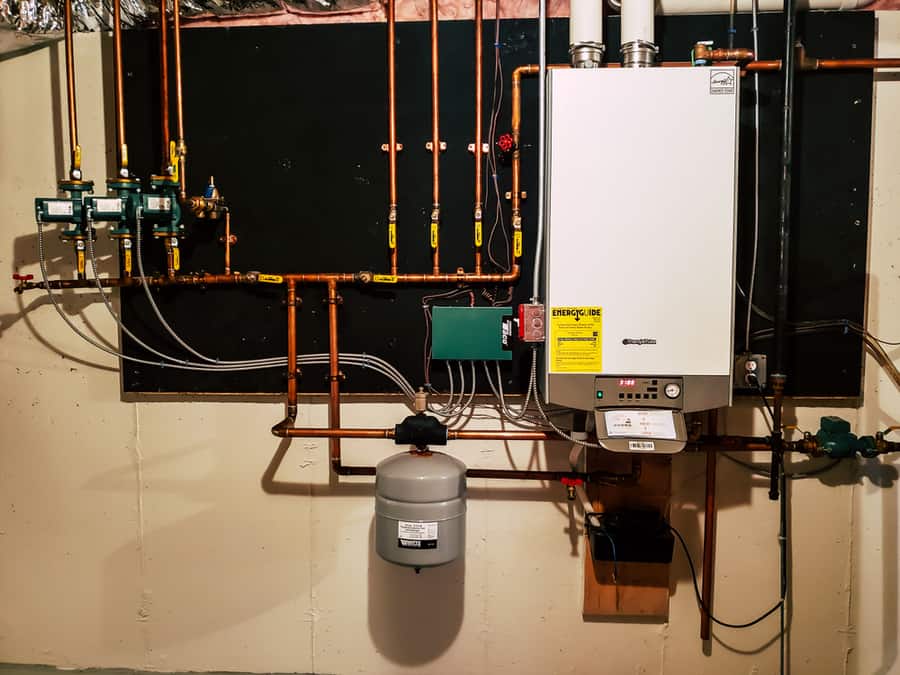
A thermal expansion tank contains a pressurized air bladder. This helps absorb the expanded hot water by contracting and relaxing as per the requirement.
Since the water in the heating unit warms up, it is supposed to generate a huge pressure inside the cylinder. If you have the thermal expansion tank attached, the pressure is directed to the expansion tank.
This can save any damage to the hot water pipeline or your heating unit due to high pressure.
As soon as you open a hot water tap and let the hot water flow, the pressure is automatically normalized. The thermal expansion tank releases the absorbed additional water back into the system.
The thermal expansion tank only keeps the expanded water channeling the pressure. It is not supposed to store the water for the long term.
As water expands on heating, the overflowing water is saved in the expansion tank. As soon as the hot water faucet is opened, the expansion tank will release the water it contains.
Is It Necessary To Install a Thermal Expansion Tank?
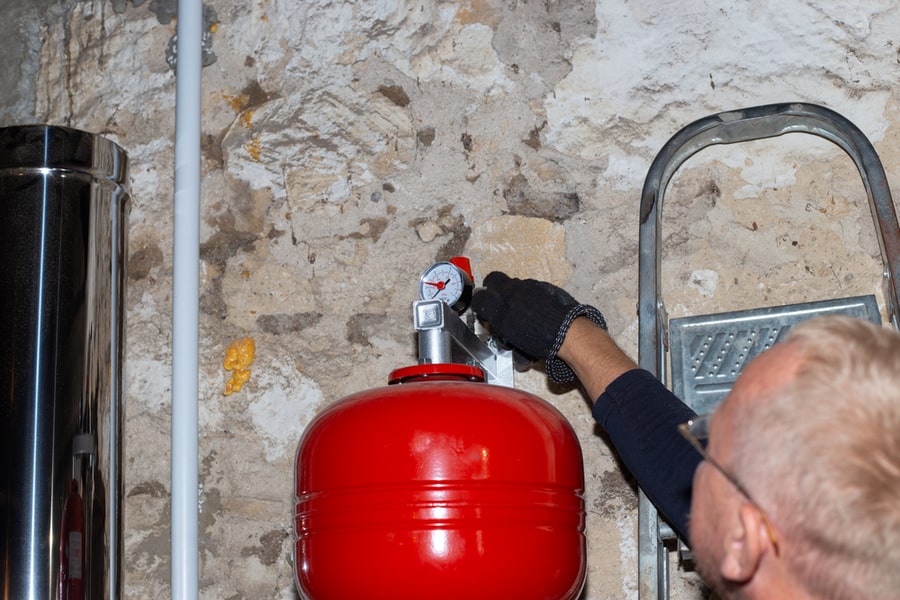
Your water heater can work perfectly fine whether it contains a thermal expansion tank. However, for your safety and to prevent an accident or pipeline burst and leakage, you must consider installing a thermal expansion tank. It depends on your personal preference.
Moreover, if you want to sell your home, which sometimes requires a permit or inspection certificate, you will need a water expansion tank anyways. It is usually an important requirement by the Building Department since it ensures all the safety measures are considered.
What Are the Consequences of Not Installing a Thermal Expansion Tank?

As all other liquids do, water also expands when heated. This can cause an overflowing of the steaming water. The steaming hot water also generates a huge pressure inside the cylinder and the water pipeline.
Since the water finds no escape, it can cause severe damage to the heating unit as well as the water pipeline:
- The hot water pipelines can undergo bents due to huge pressure.
- Bursting of water pipeline can be followed by bents.
- The water can flow out from the T&P valve looking for an escape.
- The water storage cylinder in the heating unit can develop cracks and leakage.
- The service life of the heating unit can shorten due to the high strain on its system.
- The parts of the water heating unit can undergo damage and wear out too early.
How To Size a Thermal Expansion Tank?
You must consider two main factors to decide on the right size for your thermal expansion tank. These are:
Size of Water Heater
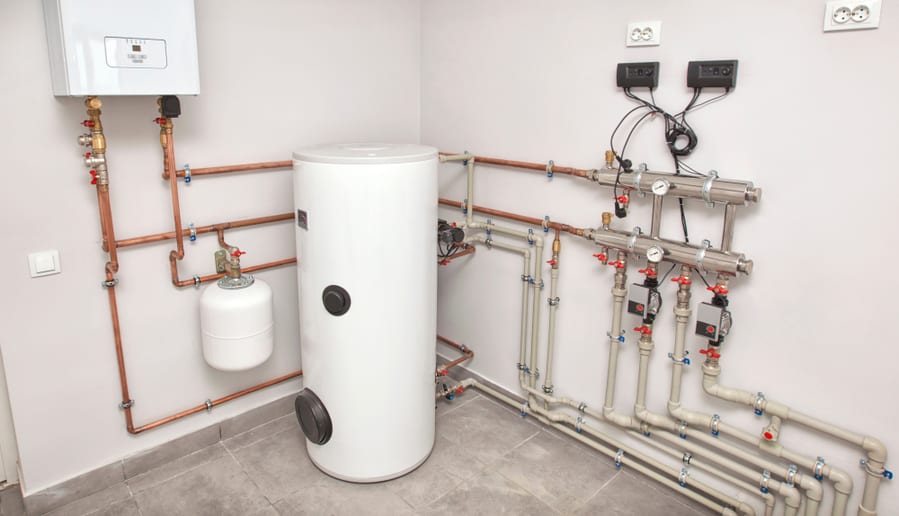
You can find the size of your water heater on its factory label. Usually, for a water heating unit with a holding capacity of 50 gallons, you will need to buy an expansion tank with a capacity of 2 gallons.
Water Pressure
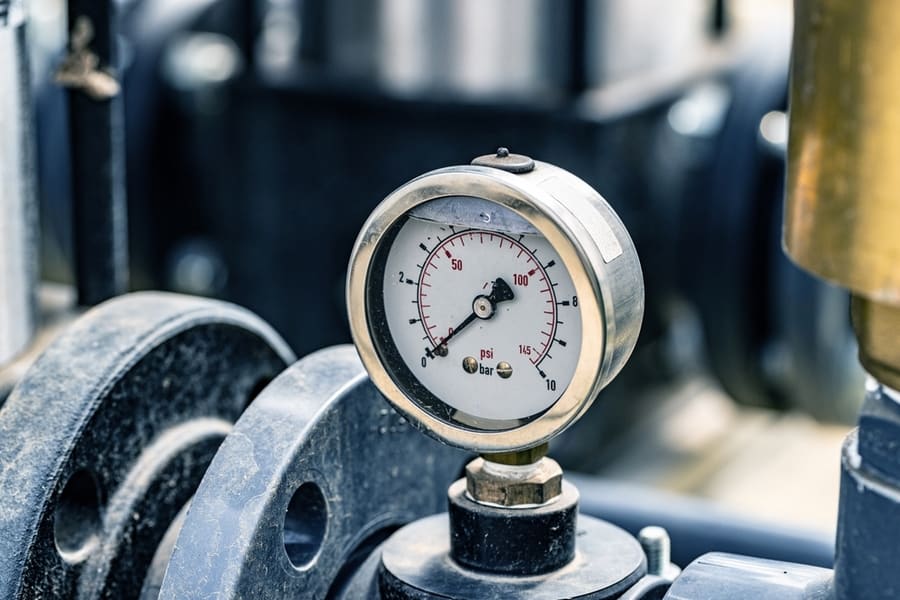
The household water pressure is important when choosing the right size for your thermal expansion tank. This can be checked by attaching a gauge to a water tap and letting the water flow. The pressure usually lies between 40-80 PSI.
Let the water flow for at least 24 hours is recommended to get the right reading. You can also contact your water supply company in this regard.
The table below provides the necessary information regarding the size of a thermal expansion tank whenever buying one:

How To Check a Thermal Expansion Tank?

To check your thermal expansion tank, you will need to follow the given steps:
- Shut the water off at your house. You will need to locate the main water supply valve and turn it clockwise to cut the water supply off.
- Release all the water in the pipelines by opening a tap and letting the water flow.
- Locate the cap on the valve stem of your thermal expansion tank and remove it.
- Use a pressure gauge to measure the pressure inside the thermal expansion tank.
For optimal performance, the pressure inside the tank must be greater than 75 PSI.
Ensure you turn off your water heater before checking the pressure inside your thermal expansion tank. Hot water can create a risk for you to burn your fingers.
What To Do if the Pressure Is Low in a Thermal Expansion Tank?
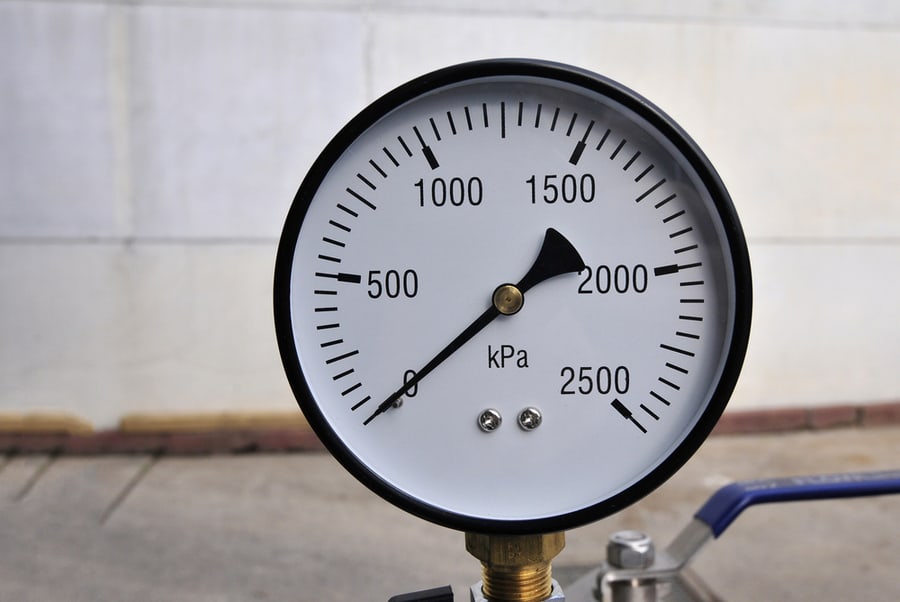
If the pressure inside the thermal expansion tank is below 75 PSI, you must adjust it using a hand pump. If you suspect zero pressure inside your thermal expansion tank, you must replace it immediately.
Conclusion
A thermal expansion tank is attached to your water heating unit as a safety device. It prevents the rupturing of the water tank or pipeline due to the high pressure of steaming water.
The rubber bladder in the expansion tank stores the water until the pressure is again normal inside the water heater.
You can check the pressure of a thermal expansion tank by attaching a pressure gauge to the Schrader valve. The pressure can be readjusted by using a hand pump.
If there is no pressure inside, you will need to replace the thermal expansion tank with a new one.
Frequently Asked Questions
What Can Happen if My Thermal Expansion Tank Is of the Wrong Size?
If you can not find the right size of thermal expansion tank as compared to your water heater, you must prefer a larger tank over a smaller one.
There is no issue with a larger thermal expansion tank as it can absorb the extra water in it safely. However, in the case of a smaller expansion tank, the risk of leakage or pipe burst will still be there.
What Is the Average Life of a Thermal Expansion Tank?
The life of a thermal expansion tank depends on its quality. Usually, a thermal expansion tank can last from 5 to 10 years.
To ensure your thermal expansion tank is working fine and not ruptured, you must check it once every year.
What Is an Easy Way To Check the Pressure in My Thermal Expansion Tank?
Here is how you can quickly check the pressure inside your thermal expansion tank:
- Locate the Schrader valve on the outside of the thermal expansion tank.
- Press the valve and pay attention to its sound.
- The tank is in good working condition if you hear the hissing sound.
- If there is no sound, it might indicate a rupture in the rubber bladder.


